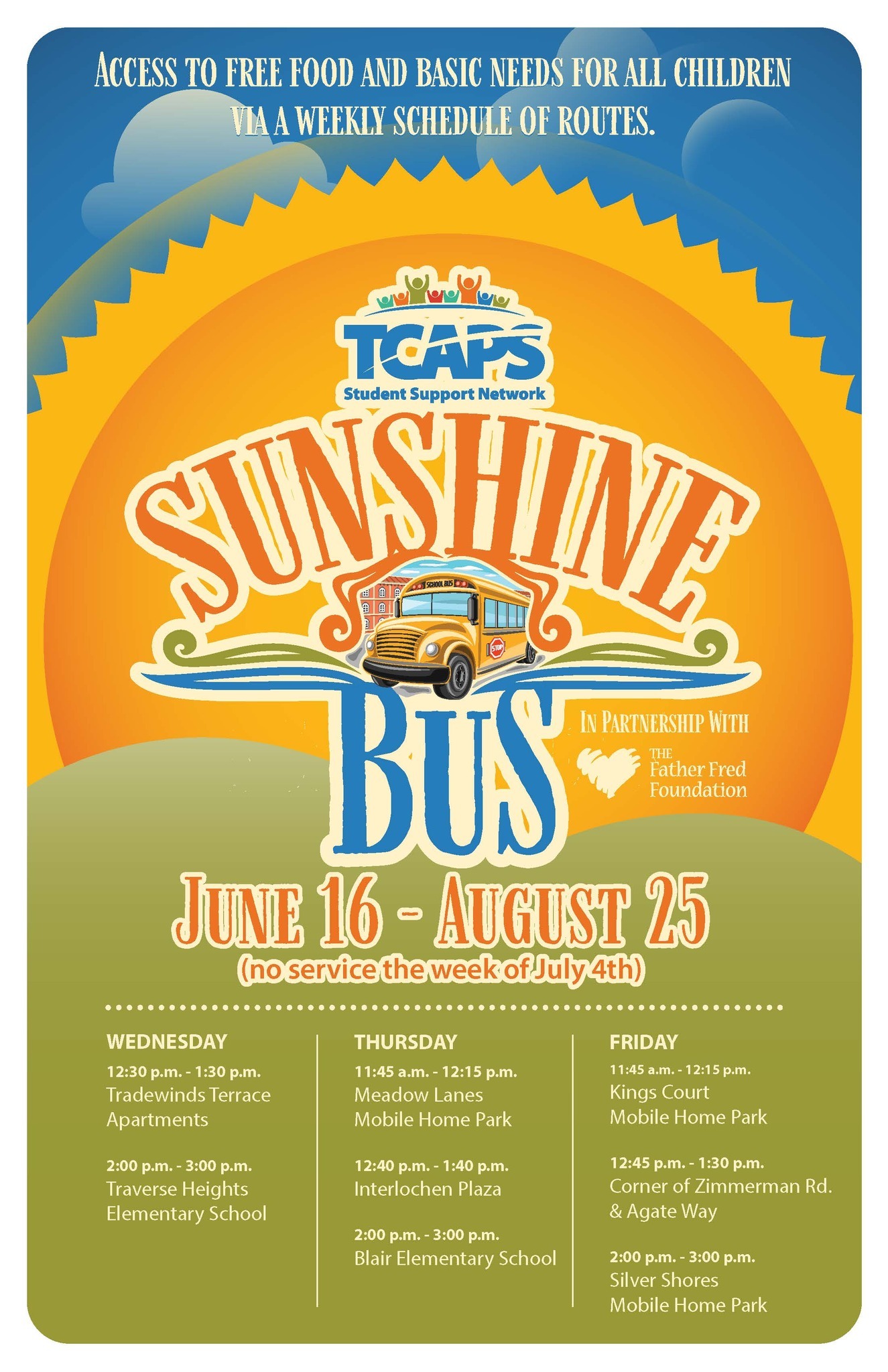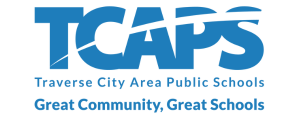Student Support Network
TCAPS Student Support Network
The Student Support Network (SSN) provides free, supportive, education-related services and non-academic support to all students to help overcome obstacles that may create barriers to learning.
Available Services & How to Access Them
TCAPS students and families can request assistance by completing the Student Support Network Request Form or by contacting KubeshCa@tcaps.net for the following services and support:
Clothing, Shoes, and Boots: Appropriate for school use
Backpacks and School Supplies: Essentials for academic success
Personal Hygiene Products: Items to support daily health and well-being
Extracurricular Support: Limited funding assistance for extracurricular activities
Community Referrals: Connections to local resources for:
Housing and transitional living
Food assistance
Medical, dental, and optical care
Mental health services
SSN Events
Sunshine Bus
Look for a yellow school bus every week near you!
From June 16 to August 25 (no deliveries the week of July 4), free meal bags and basic necessities will be delivered throughout the district on the Sunshine Bus. This program is available to all children 3 - 20. No registration needed.
Special thanks to the Father Fred Foundation for providing bags of kid-friendly meals and health snacks. Necessities will be provided by the TCAPS Student Support Network. If your child can benefit from this program and you do not have access to a Sunshine Bus location, please email KubeshCa@tcaps.net.

Pop-Up Shop
Start Your Back-to-School Shopping with SSN
The SSN Pop-Up Shop offers free new and gently used clothing, shoes, school supplies, hygiene products, and more to help students begin the school year prepared and ready for learning. Open to all TCAPS students by appointment only. To learn more or schedule an appointment, please contact Katie Kubesh at KubeshCa@tcaps.net.

Homeless Assistance/McKinney-Vento Program
Homeless Assistance/McKinney-Vento Program
Living in a shelter, motel, car, campground, on the street, or staying with family or friends (doubled up) because of money problems or being asked to leave your home, including being homeless because of a fire or natural disaster that made you lose your home, could qualify you for services under the McKinney-Vento Homeless Assistance Act.
Students who meet the federal definition of homelessness, used by all public schools in the United States, are eligible to receive support services under the McKinney-Vento Homeless Assistance Act. The federal definition includes children and youth who lack a fixed, regular, and adequate nighttime residence (at any time during the school year).
Fixed: A residence that is permanent, stationary, and not subject to change.
Regular: A residence used consistently on a nightly basis.
Adequate: A residence that meets the needs of a typical home, including privacy, space, security, lighting, access to water, and ventilation.
Services Available for Students Experiencing Homelessness
The McKinney-Vento Act ensures that children and youth experiencing homelessness have the right to stay enrolled in school, receive transportation, and access support services. SSN helps families connect with these rights and provides resources to promote school stability. Families and students can request assistance directly through the Student Support Network Request Form or by contacting the McKinney-Vento District Liaison at KubeshCa@tcaps.net.
Students experiencing homelessness, as defined by the McKinney-Vento Act, have the right to:
FAPE- Receive a free, appropriate, public education (FAPE)
Immediate School Enrollment- Assistance with immediate enrollment, even without typical documents
School Stability- Help staying in the school of origin, or what is in the best interest of the student
Assistance in maintaining school stability
Assistance with enrollment in school and transfer of student records
Transportation supports getting to and from school
Free School Meals- Access to free school meals
Basic Needs & School Supplies- Help with clothing, personal hygiene items, and school supplies
Full & Equal Participation- Support for Assistance with full participation in school (extracurricular activities and sports) and college admissions guidance, including registration, FAFSA, and scholarships
Assistance with school transportation
Local Liaison- Support from a dedicated liaison to connect students, families, and school staff
Community Agency Referrals- Assistance connecting with community resources
Northwest Michigan Student Support Network Consortium
Traverse City Area Public Schools is committed to helping children and youth experiencing homelessness in Antrim, Benzie, Grand Traverse, Kalkaska, and Leelanau counties by coordinating the McKinney-Vento Grant. Families in these counties who are experiencing homelessness may seek assistance to receive support for transportation, basic supplies, housing assistance, and other essential needs by working with their school’s McKinney-Vento District Liaison, found here.
Do You Have a Place to Sleep Tonight?
Click here to contact the coordinated entry call center for help
McKinney-Vento Homeless Liaison
Katie Kubesh
Student Support Network (SSN) Coordinator
McKinney-Vento District Liaison
McKinney-Vento Regional Grant Coordinator
Would You Like to be a Donor?
Donating to SSN
Help SSN Break Down Barriers to Learning
Every day, students face obstacles that prevent them from reaching their full potential. Your donation helps to remove those barriers and makes a lasting impact on their lives. By supporting the TCAPS Student Support Network, you’re not just contributing–you’re investing in a student’s future. Your generosity provides more than essential items and school supplies; it fosters confidence, builds hope, and opens doors to new opportunities.
Make a difference today:
Donate online at www.tcaps.net/donate or make checks payable to TCAPS, write “SSN donation” in the memo line, and mail to: TCAPS Student Support Network, P.O. Box 231, Traverse City, MI 49685
Donate goods or services by contacting the SSN office at KubeshCa@tcaps.net or 231.933.1789
Donate to the Student Support Network when shopping for school supplies. Learn more here.
Together, we can fill more than backpacks–we can fill minds with opportunity.
